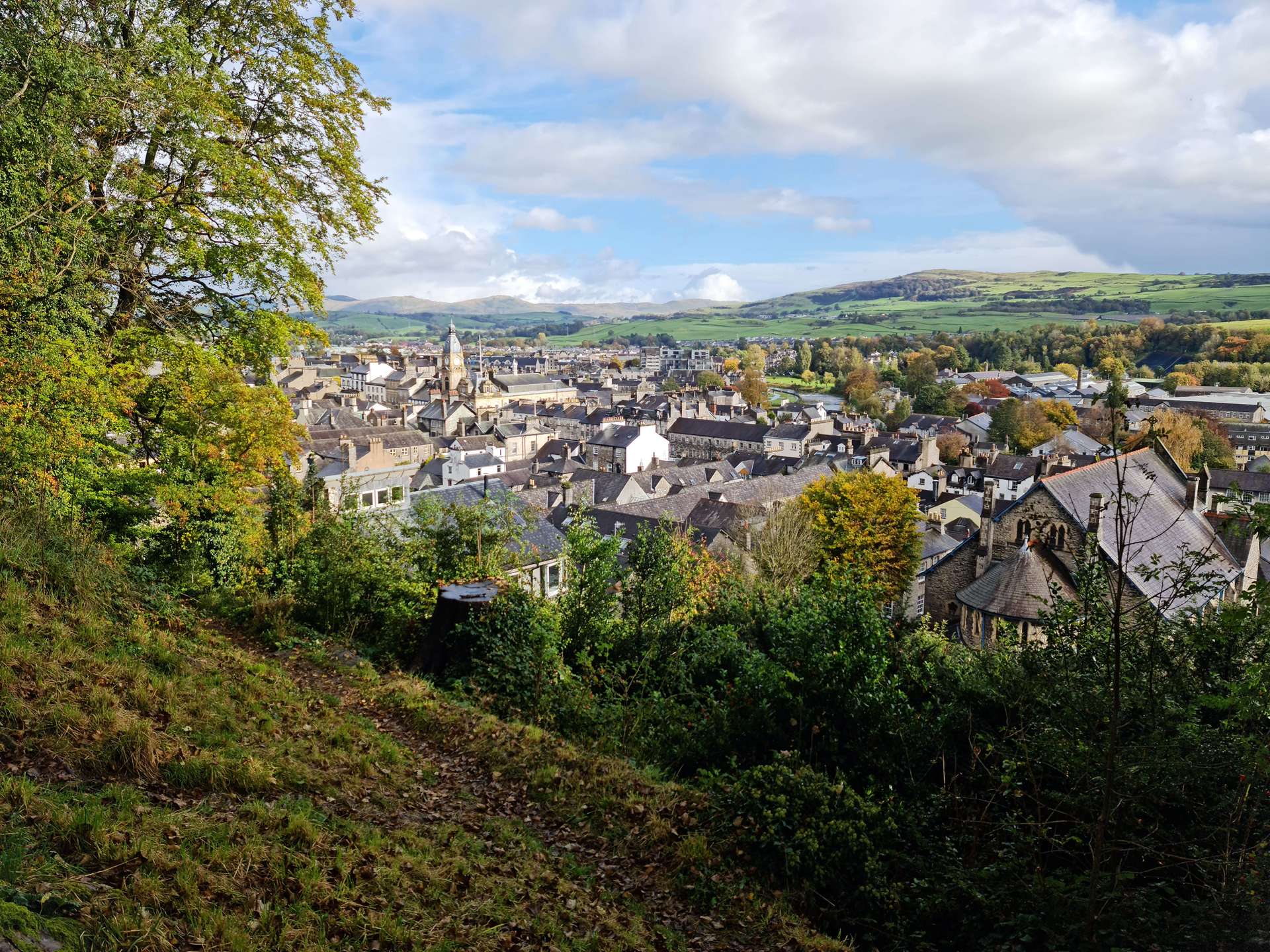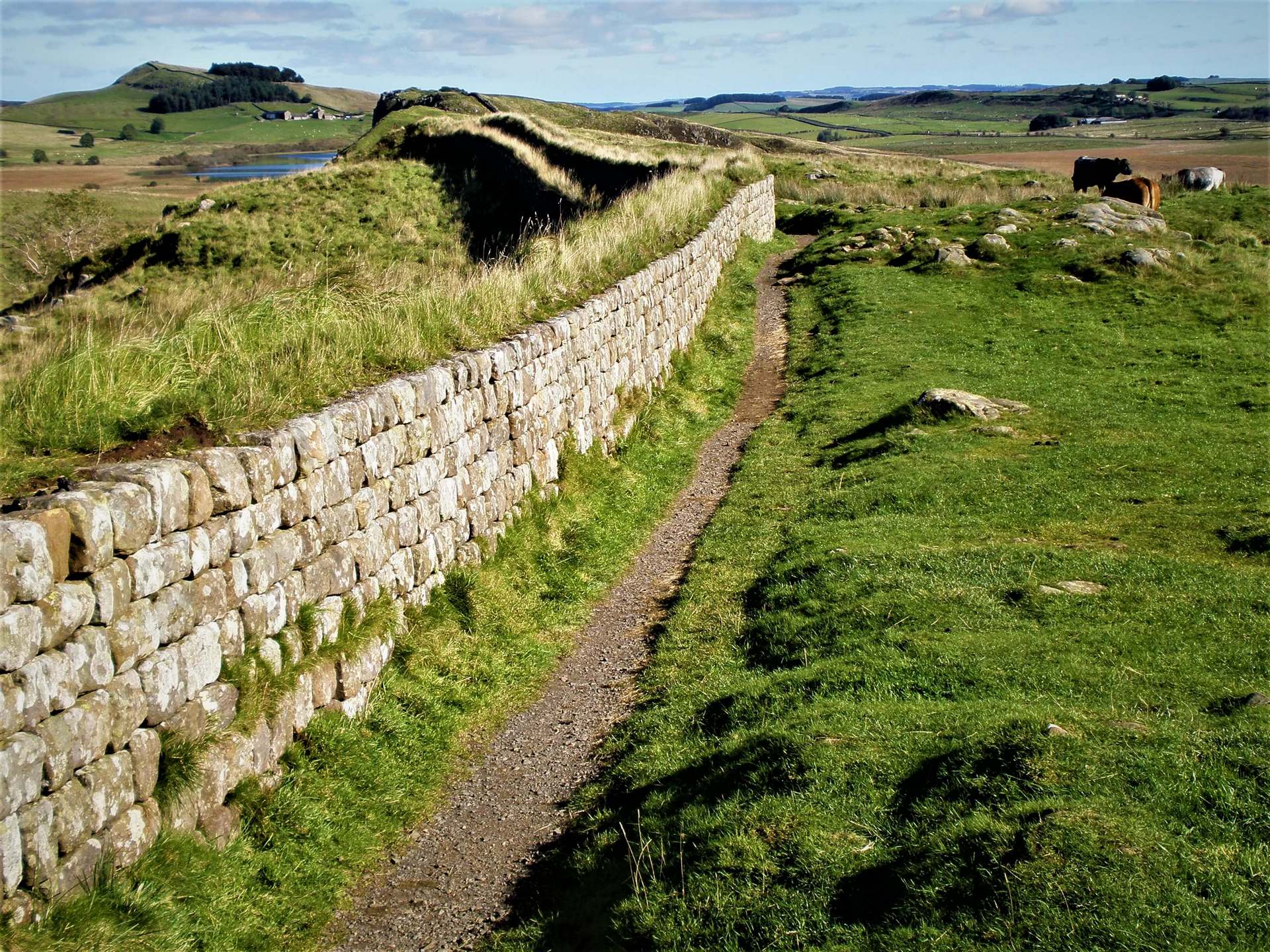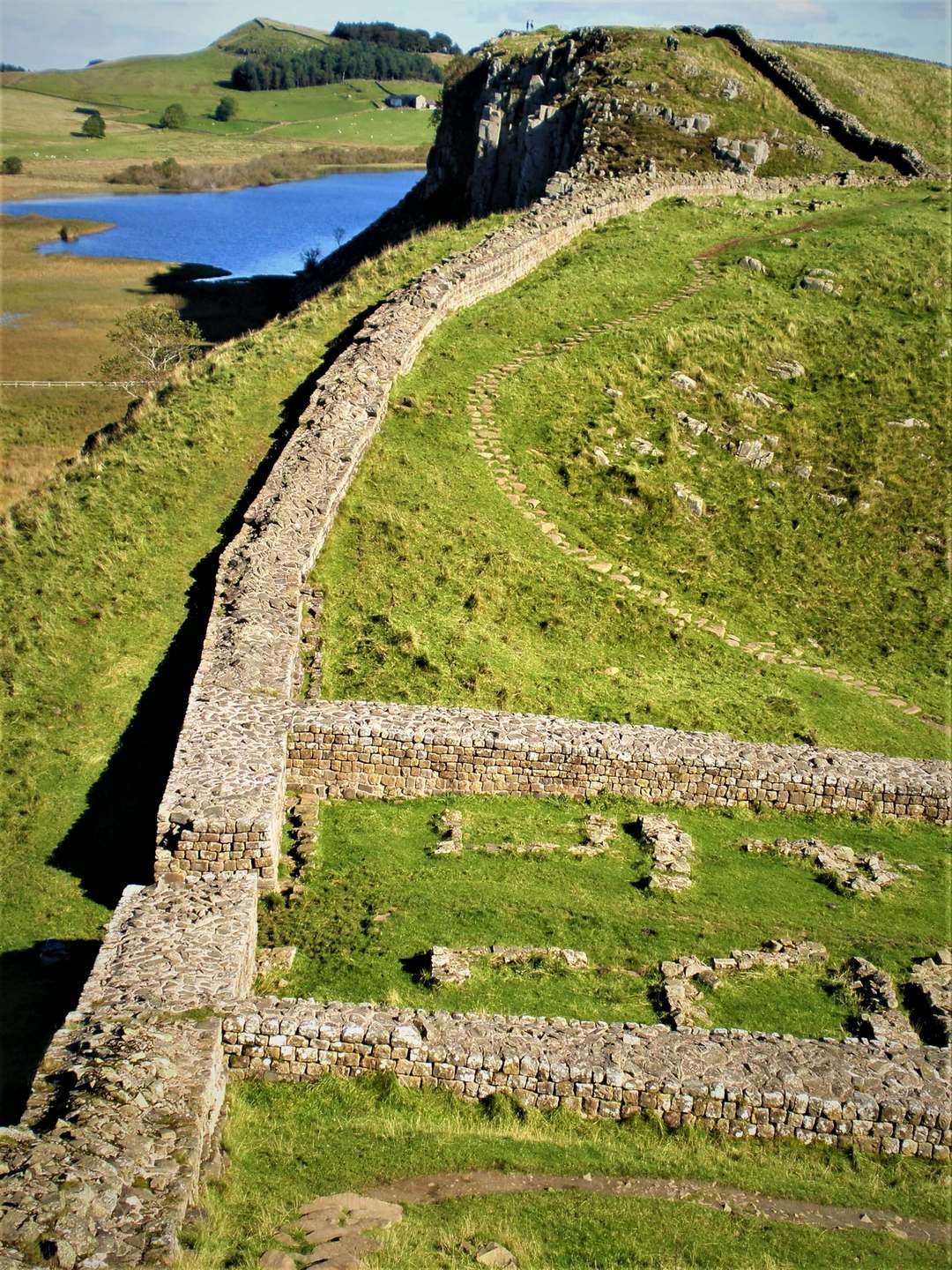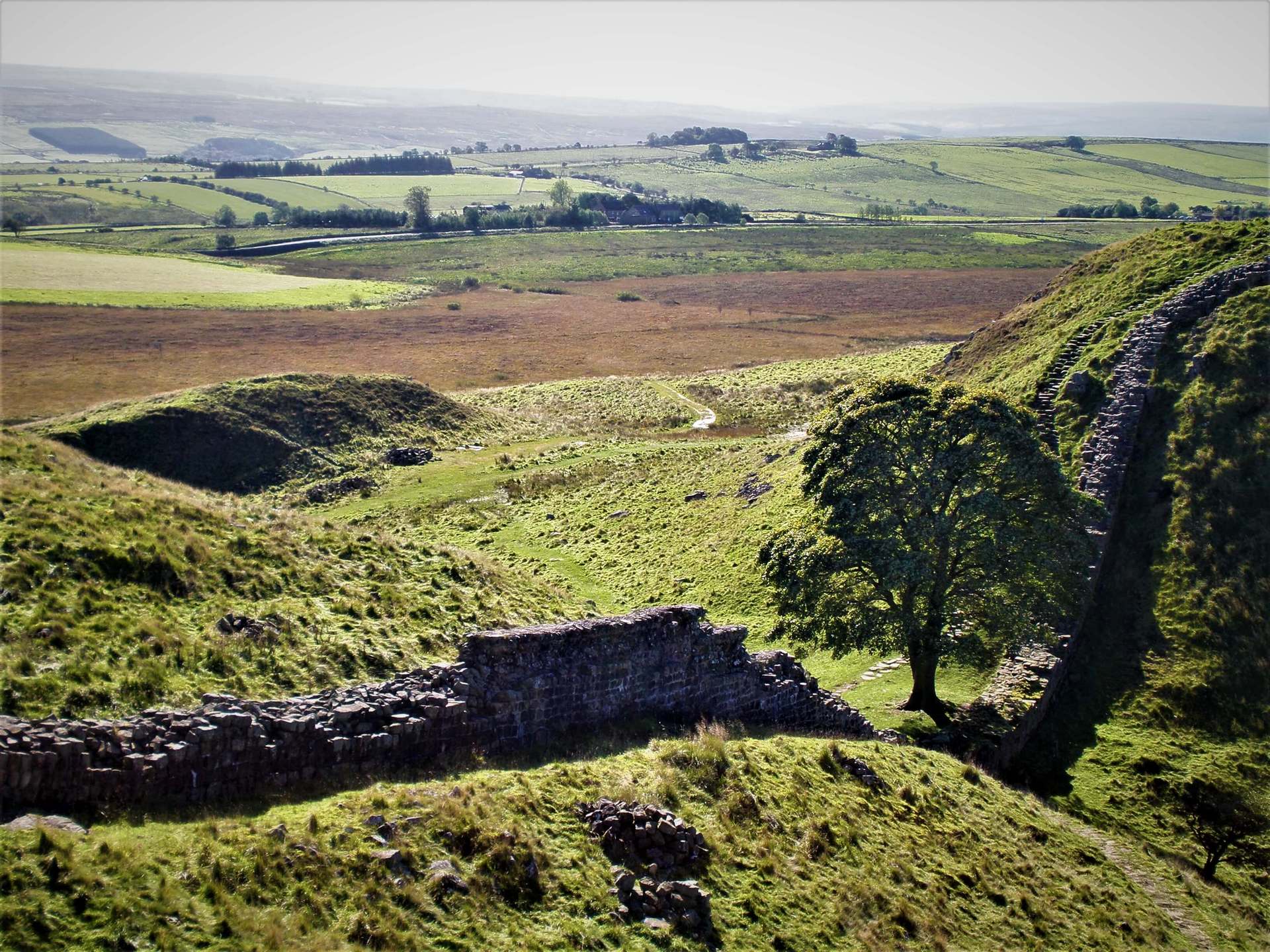A Tribute to Wainwright
Guest article by Shane Wilkinson
5 October 2008 proved to be a memorable day trip, focusing on celebrating the 70th anniversary of Wainwright’s A Pennine Journey completion in 1938. Instead, it became a fulfilling recollection and tribute to the master fellwanderer’s works and their continuing influence around the entire region to be visited during this epic tour.

This exciting saga began on a crisp, autumnal, bright, sunny morning (these perfect conditions prevailed throughout the day). I caught the first bus from Kendal into Lakeland’s scenic splendour, experiencing a very familiar transportation routine for a solitary Wainwright during those 13 years of compiling his seven iconic Pictorial Guides from 1952 to 1965.
Leaving Wainwright’s hometown of 50 years was an appropriate starting point for this nostalgic journey. Even at the commencement, his favourite book of all was, in my thoughts, Kendal in the Nineteenth Century. Soon after passing the Little Chef at Ings, a firm favourite place of Wainwright in later life, I arrived at the bus stop by the Windermere railway station. Right from the outset, the River Kent Valley was followed upstream, thus bringing to mind the Three Westmorland Rivers.

Here was the likely location for his first tentative steps on Lake District ground. The promised land was finally discovered with the Orrest Head footpath nearby, and that was a life-changing moment for the 23-year-old dreamer in 1930. Wainwright’s premier ascent in this newly discovered realm of paradise was noticed that it rightly finds a place in The Outlying Fells of Lakeland.
Moving forward to Ambleside, we realise that 9 November 1952 was the date for an aspiring Wainwright to put pen to paper towards his challenging Lakeland guidebook odyssey and his trademark artistic style showing the route to Dove Crag. Continuing to Grasmere at the heart of poet Wordsworth’s home territory, with Wainwright becoming a later renowned artist, to praise the wonder of Lakeland landscapes to far wider audiences.
Here was the first appearance, and not the last on this excursion, for his route creation across the whole north of England, the eminent A Coast to Coast Walk, which he completed during the summer of 1972.
Helm Crag dominates the scene, and this was the only summit where Wainwright could not reasonably negotiate the very highest point, a reminiscence from The Central Fells. Then, over Dunmail Raise and alongside Thirlmere, Helvellyn’s heights rising above, included in The Eastern Fells, where Wainwright truly made his mark with that pioneering publication.
The first bus ride from Kendal duly ended at Keswick. Wainwright often travelled back home on the same bus journey, following further research towards his ultimate task (suitably nourished with fish and chips). With no time to linger, it was straight onto Carlisle’s connecting bus, skirting Skiddaw’s slopes and passing the most northern fell of Binsey from The Northern Fells.

At Bothel, the opening chapter of this thrilling trip was completed via a top-deck viewpoint voyage through the Lake District National Park, with the vibrant Autumn colours on display being a joy to behold, along with the outstanding scenery.
At Carlisle, I boarded the train, taking this exciting expedition closer to the main objective of the day. Haltwhistle railway station was so near and yet so far from the target of Hadrian’s Wall because of a delay with the next bus to Once Brewed.
As trepidation set in stronger and eagerness to carry on, there was a chance to reflect at the place where Wainwright stayed for a night on 30 September 1938, after his first-ever visit to the wall during his mammoth Pennine Journey. Being frustrated by this sudden halt to the day’s proceedings also matched Wainwright’s disappointment upon discovering that his photos taken up to this point were unsuitable for his requirements.
The top highlight of this tour was the joy of finally reaching Hadrian’s Wall for the first time. After being on public transport for so long, it felt grand to take on an exhilarating march along with one of the most delicate sections of this historic landmark. It was my first encounter with Britain’s earliest long-distance path (during this trip), but it was certainly not the last. I appreciated Wainwright’s satisfaction and achievement of arriving on foot from Settle 70 years earlier. He would return here later for his unique guidebook, the Pennine Way Companion.


Peel Crags, Sycamore Gap, Highshield Crags, and Crag Lough provided a brief walk along the wall (the same hike has been done since and continued to Housesteads Fort). It was still gloriously weathered but well into the afternoon by now, and the infrequent bus back to Carlisle was due. Here ends the next chapter on this day of discovery.


Leaving the capital city of Cumberland by train yet again, but this time through the valley of the River Eden to its source in the Pennines and An Eden Sketchbook came to mind. Firstly, onto Appleby-in-Westmorland, where Wainwright also arrived during his Pennine Journey adventure on 3 October 1938. From here, we would both be taking different routes and methods of movement, but ultimately to the same destination of Settle.
Staying for too long in the comfort of a cafe during bad weather conditions, he almost gave up and even considered catching a train back home. However, he firmly carried on towards Kirkby Stephen railway station (which was also the next place on this day trip), but even more unkempt than before. He strongly thought again about calling it off with another station nearby. In this Kirkby Stephen area, A Coast to Coast Walk was met once more (the last time being at Grasmere), and the Yorkshire Dales were approached.
Several works by Wainwright were recalled in quick succession during the transition from Westmorland into Yorkshire, most notably his masterpiece Westmorland Heritage, along with A Dales Sketchbook and A Second Dales Sketchbook, whilst passing directly below Wild Boar Fell, over the Settle to Carlisle railway line summit level at Ais Gill, and through to Garsdale station. This area was mentioned in Walks on the Howgill Fells. England’s highest mainline station at Dent introduced Walks in Limestone Country.

Crossing the famous Ribblehead Viaduct, surrounded by Yorkshire’s Three Peaks of Whernside, Ingleborough & Pen-y-Ghent, heralded the starting place for A Ribble Sketchbook. For the first time since Hadrian’s Wall, an acquaintance was made at Horton-in-Ribblesdale with Pennine Way Companion again – although it’s still not the last meeting place for that trail on this long day trip.
Settle railway station was the following notable location, the most important of all, along with Hadrian’s Wall. On 25 September 1938, this was the very spot where a 31-year-old Wainwright embarked on his mission and successfully returned here on 5 October 1938. He was greeted back into town with a fitting double-arched rainbow in the skies above. Precisely 70 years after his epic performance on foot, the train from Carlisle on 5 October 2008 was to arrive with the delightful Dales scenery in glowing early evening sunshine. A plaque now records that event of esteem inside a platform building.
Looking further down the Ribble Valley revealed a glorious light on the ever-prominent Pendle Hill, where a young Wainwright made his first proud conquest to a high hilltop of renown. Hellifield railway station caused a momentary thought regarding Wainwright’s possible return route back home to Blackburn in 1938. Did his train proceed directly through the Ribble Valley via Clitheroe, or was there a longer alternative involving a connection at Skipton?
I continued to Gargrave station for yet another meeting with Pennine Way Companion. Travelling through the Yorkshire Dales National Park, from north to south by train, meant the end of a further chapter on this fulfilling journey. With the bonus of a superb sunset over the Pennine foothills (looking in the direction of Wainwright’s birthplace area beyond), it provided a charming celestial vision from Skipton to Keighley and then through the Aire Valley towards Leeds.
A final train to Huddersfield and a late bus home brought this entire expedition to its gratifying conclusion. But one more act remained and was done in darkness using a peaceful night stroll into the Peak District National Park and going partway up the moorland road to Wessenden Head, also mentioned in Pennine Way Companion. Black Hill is nearby and notorious for its thick covering of peat, especially during the mid-60s when Wainwright was surveying the route to compile his guide.

<<>>
In the stillness of that cold night at the end of such a long day of Wainwright memories, it was a moving moment to consider that Wainwright almost perished after that, becoming stuck in a bog near the lonely summit. Of course, if he hadn’t survived his ordeal, all these publications mentioned here, apart from the original seven-volume Pictorial Guide to the Lakeland Fells, would never have appeared in all their glory.
With this eventful occasion drawing to a quiet finale and being situated just inside the northeastern boundary of the Peak District, there was a realisation that four different National Parks had been visited in a single day, and by using public transport throughout this meaningful venture. Hopefully, Wainwright would have been pleased with this tour in his honour and acknowledgement that his legacy lives on!
Back to top of page

